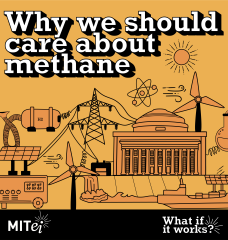
Introduction
There is a core paradox at the converging point of global energy consumption and geopolitical platform: the world is projected to have a total population of 9 billion by 2050 while energy demand will increase by 200%. To sustain the ever-increasing industrial pace, the Big Oil (the largest oil & gas companies in the world) needs to strategize the delivery mechanism and ensure the maximum energy access over the period.
Digitalization is one solution to this dilemma as the energy giants are looking for disruptive changes to meet the growing energy demand around the world. For instance, the revolution of energy cloud can result in around $1 trillion worth of new global investment down the energy value chain for the next 30 years (or more). In addition, another $1–1.5 trillion worth investment in digital infrastructure and associated services can be attained in the value chain by 2030.
The Digital Forwardness
Ushered by the blessings of technological advance, the global power & energy industry has transcended to a dynamic platform of two-way, and intelligent grid architecture, known as the ‘Energy Cloud’. This is an emerging trend in the power & utility industry borrowed from the concept of cloud computing and the Internet of Things (IoT). This cloud network, similar to IT networks, is able to increase efficiencies in solar, wind and energy systems across consumers. The four key trends pushing this movement are: the transition from a central grid to decentralized grids, multiple customer choices, increased regulations to reduce GHG emissions, and greater data availability. The theme helps to replace the existing century-old energy infrastructure with an integrated network of energy utilities that directly controls and monitors a wide range of commercial, environmental, technical, and regulatory changes.
Digitization process has always begun in decentralized production, real-world analysis from sensor network and mobile computing. The trend has affected the power transmission & distribution, power grids, and network monitored homes & business entities, ultimately bringing an influx of opportunities navigated towards a changing horizon.
This shift offers major opportunities for the open, competitive and innovative business platforms that can directly alter the existing business models, shape the policy frameworks, propel continuous technological innovations and overhaul power grid architectures at state and regional level. Aside from serving the core business objectives, the digitization process helps the organizations to reduce business risks, overcome operational challenges, seize opportunity for innovation & growth and lead the emerging digital economy.
Dissecting the Digital Disruptor of Energy
The need for mass-energy has translated the technological improvements into newer forms of energy clouds. This disrupting technology includes Shale’s game-changing drilling technology, i.e., horizontal drilling, and seismic imaging in the South China Sea, IDCOL’s revolutionary solar home system in Bangladesh and Tesla’s super energy-saving and eco-friendly hybrid vehicles in Germany.
At the heart of the energy could remain a changed market structure that is more swift, responsive and transparent. The structure is a combination of five S’s: semiconductors, solar, storage, sensor, and software. The combination of these complementing units enables a centralized energy system where energy generation and power consumption become more decentralized and data-driven for the changing landscape. The central core of the energy cloud serves the interconnected interest of power plants and electric system, PV solar, energy cogeneration, natural gas combined plants, industrial automation and hybrid vehicles (EV). Some of the key factors of the emerging landscape are:
- Centralization of emerging technologies: distributed energy resources (DER), virtual power plants (VPPs), and building energy management systems (BEMSs).
- Multiple inputs and users, supporting two-way energy flows.
- Multiplex market structures and complex business transactions.
- Digitalization of the electro-mechanical infrastructure.
- Market liberalization with adapted regulation for a shifting electricity generation mix.
Harbinger of New Megatrends
Energy cloud is not only serving the power & energy industry but disrupting other industries as well. The other industries can be related to advanced analytics, computational technology, and robotics. The digitization is unrelentingly revolutionizing the process of industrial revolution and escorting newer megatrends. It is accelerating business transformation in the industry, including the introduction of new players, and changing the traditional business strategy and organizational setup. Some of the emerging trends welcomed by the digitization process are summarized below:
More Options and Customer Choices: With various buying decisions and power options, the majority of the customers want to control electricity usage and expenditure. This offers the ability to self-generate and buyback the power to the grid. Energy buyers, such as Apple, Cisco, Amazon, Google, Walmart, and Honda have refocused their emphasis on renewable energy solutions. This is now enabling new options of the power purchase agreement with the utility companies. With massive data centers and storage facilities, these organizations are now diversifying their portfolio and avoiding the risk of system and business failure.
Environmental Protection Policies and Regulations: It is inevitable that the digitization process will enable a new horizon of improved policy framework at the state and regional level. As the utility industry is in its infancy, a synergic regulatory platform is yet to be devised. This will bring the policy makers and industry practitioners to the same platform. After the adoption of UNFCC framework and the iconic Earth Summit in Rio de Janeiro in 1992, most of the signatory countries have formed multiple environment protection agencies, compliance frameworks and national roadmaps coupled with the digitization of global energy framework. This has enabled the governments, energy practitioners, policymakers and customers to come with increased awareness of environmental protection.
Reduced Carbon Footprint: Digitization and automation of the existing energy setup for any business landscape offer reduced carbon footprint. The global energy sector in recent years has experienced drastic changes due to the decentralization of energy systems and improved but diversified application of clean and renewable energy. As a result, the conventional power generation method is changing its course towards energy saving modes. Eventually, this is reducing the emissions of industrial waste, CFC, and GHG gases, ultimately creating more climate action platforms for the policymakers.
Diversified Business Options through Mergers and Acquisitions (M&A): To welcome the digitization process, many utility companies are venturing into new strategies to harvest complementing strengths. Exelon’s acquisition of Pepco in the North America, E.ON; Enel’s purchases of former UES assets in Russia; Iberdrola’s move for Energy East in the USA; and Alinta’s purchase of AGL’s infrastructure business in the Asia Pacific are some of the examples of M&A that resulted from digitization of energy cloud. Other than offering an expanded business platform and diversified product portfolio, these strategies are adding shareholder value through increased synergies.
New Competition and Business Opportunities: Some of the industries, i.e., oil & gas (O&G), utilities and original equipment manufacturers (OEM) are now collaborating with disruptive business platforms, such as renewable energy, DER, smart cities, and hybrid cars. Already, many business entities are finding crossover investments and cross-industry movements between utility and O&G industries. The energy cloud will introduce new areas of business opportunity in this crossover, for example, industrial energy efficiency, rapid demand response, smart infrastructure, and energy management.
The Missing Core of Energy Digitization
It is true that the energy cloud is more flexible and resilient than the traditional power grid and energy appliances. However, it summons new challenges to the power sector and poses barriers to the fundamental business setup. The digitization process is still in its infancy that poses an unbalanced synergy among the utility industry, business vendors and customers. As a result, the digitization process is taking baby steps. Although the term and application of the process are installed in relation to the adoption of IoT, robotics and industry automation, the original process is unequally taking place in developed and developing countries. Even many industry appliances and business customers are being affected by the Shiny Object Syndrome of the process and adopting the relatively expensive application without installing proper gears. Unlike traditional sectors, the power & energy industry sector has more horizontal spread with interlinked supply and value chains. This makes the industry to face relatively slower change in the parallel run of a disruptive wave. Additionally, the digitization process creates a gap between textbook promises and real-world application. Some of them are described below.
Modified Business Platform: Digitization process alters the capabilities of existing power plants and business instruments. It significantly lowers the entry barriers for technology and other digitally savvy competitors but endangers the conventional business entities and operations. At the same time, it catalyzes product and service portfolio that technically raises customer expectation but are practically unavailable or have never been offered to the existing utility setup.
Digital Transformation: The process offers the risk of digital transformation, such as the collapse of the conventional utility system, loss of job, invasion of privacy and aggression of robot and technology.
Complex Customer Relationship: As long as the DER will continue to grow for the next 5-10 years, there will be an undeniable change in the customer choices and technology landscape. This will digitize the power grid and aptly spread renewable energy resources and technologies all around the industry. However, this will introduce a more complex setup of customer relationship due to the divergent choices.
More to Come…
As the digitization process is blurring the industry boundaries, new consortia are being formed to provide integrated customer solution to the energy industry. The digitization process is a product of continuous innovation, most of which lies beyond our actual purview. Due to its limited application and expensive measurement, the technology is not yet fully optimized even in the most advanced states in the world. However, disruptive and widespread changes will penetrate all corners of the power & energy industry. For that reason, industries and business corporations are now offering more complex yet agile and digitally competent solutions to the customers.
To realize the full potential of the digitization process, concern stakeholders should opt for a holistic approach and the energy leaders should initiate an engaging vendor ecosystem. A unique platform should also be introduced for the unified application of the system which will be able to help ideate how digitization can be successfully integrated into our everyday lives. Only then we will be able to harness and realize the full potential of the application.






